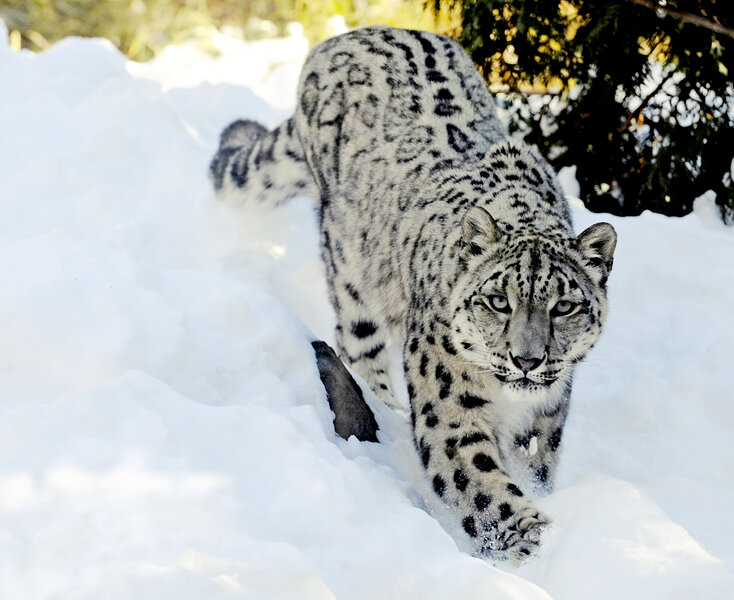Can we save the snow leopard from climate change?
Loading...
In a report published this week, the World Wildlife Fund suggests the snow leopard is in serious danger from climate change, with as few as 2,500 breeding adults left in the wild.
Their habitat spans across rocky, mountainous terrain in 12 central Asian countries. Climate change will further threaten the already endangered species, by encouraging local communities to migrate up the mountains, into snow leopard territory.
“Increased habitat loss and degradation, poaching and conflict with communities have contributed to a 20 percent decline in the population in the past 16 years and left the species barely hanging on in many places,” the World Wildlife Fund said in a statement. “Unchecked, climate change will exacerbate these threats and could push the species over the edge.”
A warming climate will force original tree line patterns up the mountains, and local farmers will also climb to higher altitudes to raise their crops and livestock. These northern shifts will continue to squeeze the snow leopards into smaller habitats, as they are forced to accommodate new human settlements.
There is also the issue of water resources.“It is not just snow leopards that are at risk," the statement reads, "since their high-altitude habitat spans many of Asia’s major watersheds,” with over 330 million people dependent on local rivers to survive. The World Wildlife Fund suggests climate change could drastically change the mountains’ water flow in the high-altitude habitats of the snow leopard, endangering humans, leopards, and countless other species.
But "we don’t have to choose between humans or the giant cats," Brad Rutherford, executive director of the Snow Leopard Trust, told CBS News. “Helping snow leopards means you are helping humans,” he says. “People share that landscape with those cats."
Because the snow leopard’s habitat expands across 12 countries, future conservation efforts will paint a picture of what international species protection might look like. Several countries, such as Kyrgyz Republic, have already tried to set an example, as President Almazbek Atambayev continues to push forth ambitious protection efforts with the Global Snow Leopard & Ecosystem Protection Program (GSLEP).
In 2013 at a GSLEP convention, the 12 Range Countries, as they are known, put aside politics and signed the Bishkek Declaration. Among other efforts, the declaration confirms that the 12 countries “express strong concern about the increasing threats arising from growing human footprint and climate change to the survival of snow leopards … [and] affirm the need for urgent collective action to conserve snow leopards and their fragile habitat.”
Through GSLEP, the 12 countries agree “to work together to identify and secure at least 20 healthy populations of snow leopards across the cat’s range by 2020, or 20 by 2020.” Although “Many of these populations will cross international boundaries,” the 12 Range Countries agree that the snow leopard’s survival is a priority.
CIA agent and environmentalist Peter Matthiessen spent months hiking in Nepal searching for a snow leopard in the 1970s, but failed to spot one of the mysterious cats. In his book "The Snow Leopard," Mr. Matthiessen, who died last year, agrees there is a unifying aspect of the animal and describes the leopard “whose terrible beauty is the very stuff of human longing.” He was so awed by the snow leopard’s beauty, that he even concluded, “It is, I think, the animal I would most like to be eaten by.”








